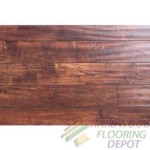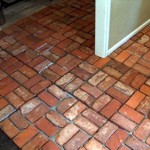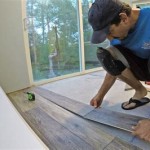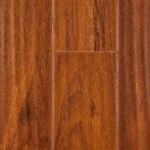Installing Bruce Hardwood Flooring on Stairs
Transforming your staircase with the elegance and warmth of Bruce hardwood flooring is a rewarding project that adds timeless value to your home. While it may seem daunting, with careful planning and attention to detail, you can achieve professional-looking results. Here's a comprehensive guide to help you through the essential aspects of installing Bruce hardwood flooring on stairs.
Planning and Preparation
Before you begin, carefully measure the dimensions of your stairs, including the treads, risers, and nosings. Determine the direction you want the planks to run on the stairs and calculate the amount of flooring you'll need, allowing for waste. Gather all necessary tools, including a miter saw, circular saw, nailer, and measuring tape.
Prepare the stairs by removing any existing floor coverings, such as carpet or vinyl. Inspect the subfloor for any imperfections or damage and make necessary repairs. Ensure the subfloor is level, smooth, and securely attached to the joists.
Cutting the Treads
With the subfloor prepared, you can begin cutting the treads. Measure and mark the dimensions of each tread on the hardwood planks. Use a miter saw to cut precise 90-degree angles for the ends of the treads.
For the nosings (the rounded or angled edge of the treads), use a circular saw or a router to shape the planks accordingly. Ensure the nosings match the profile of the existing nosings or the design you prefer.
Installing the Treads
Apply construction adhesive to the subfloor and the bottom of each tread. Carefully place the treads in position, ensuring they are aligned correctly and flush with the edges of the stairs. Use a nailer to secure the treads to the subfloor, driving nails at an angle through the tongue and groove joints.
Cutting and Installing the Risers
Measure the height of the risers and cut the hardwood planks accordingly. Apply construction adhesive to the back of each riser and position it against the underside of the tread above. Secure the risers using nails or screws, ensuring they are flush with the edges of the treads.
Nailing the Nosings
Once the treads and risers are installed, it's time to nail the nosings in place. Apply construction adhesive to the underside of each nosing and carefully align it with the edge of the tread. Use a nailer to secure the nosings, driving nails at an angle through the tongue and groove joints.
Finishing Touches
After all the hardwood flooring has been installed on the stairs, you can finish the project by sanding any rough edges, filling any nail holes with wood filler, and applying sealant or polyurethane to protect the floor from wear and tear. Allow the sealant to dry completely before using the stairs.
Tips for Success
- Use a level to ensure that all treads and risers are perfectly level and aligned.
- Countersink nails slightly below the surface of the wood to prevent them from snagging.
- Allow the flooring to acclimate to the temperature and humidity of your home for several days before installation.
- Protect the finished staircase from heavy traffic or furniture until the sealant is completely dry.
- Regular cleaning and maintenance, such as sweeping, vacuuming, and occasional damp mopping, will keep your Bruce hardwood flooring looking its best for years to come.

You Want To Install Hardwood On Stairs Reallyfloors America S Est Flooring

How To Install Bruce Solid Hardwood Floors Using Nails

Installing Engineered Wood Floors Hallway Layout Part 3

Bruce Stair Treads Hurst Hardwoods

How To Install Hardwood On Stairs

Bruce Red Oak 3 4 In Thick X 1 8 Wide 78 Length Stair Nose Molding T731134 The Home Depot

Hardwood Staircase Installation

Bruce Maple 3 4 In Thick X 1 8 Wide 78 Length Stair Nose Molding T7397 The Home Depot

What To Do About Plywood Landings On Stairs Doityourself Com Community Forums

Lowcountry Toffee Stairs Wood Stair Treads Laminate Flooring On








